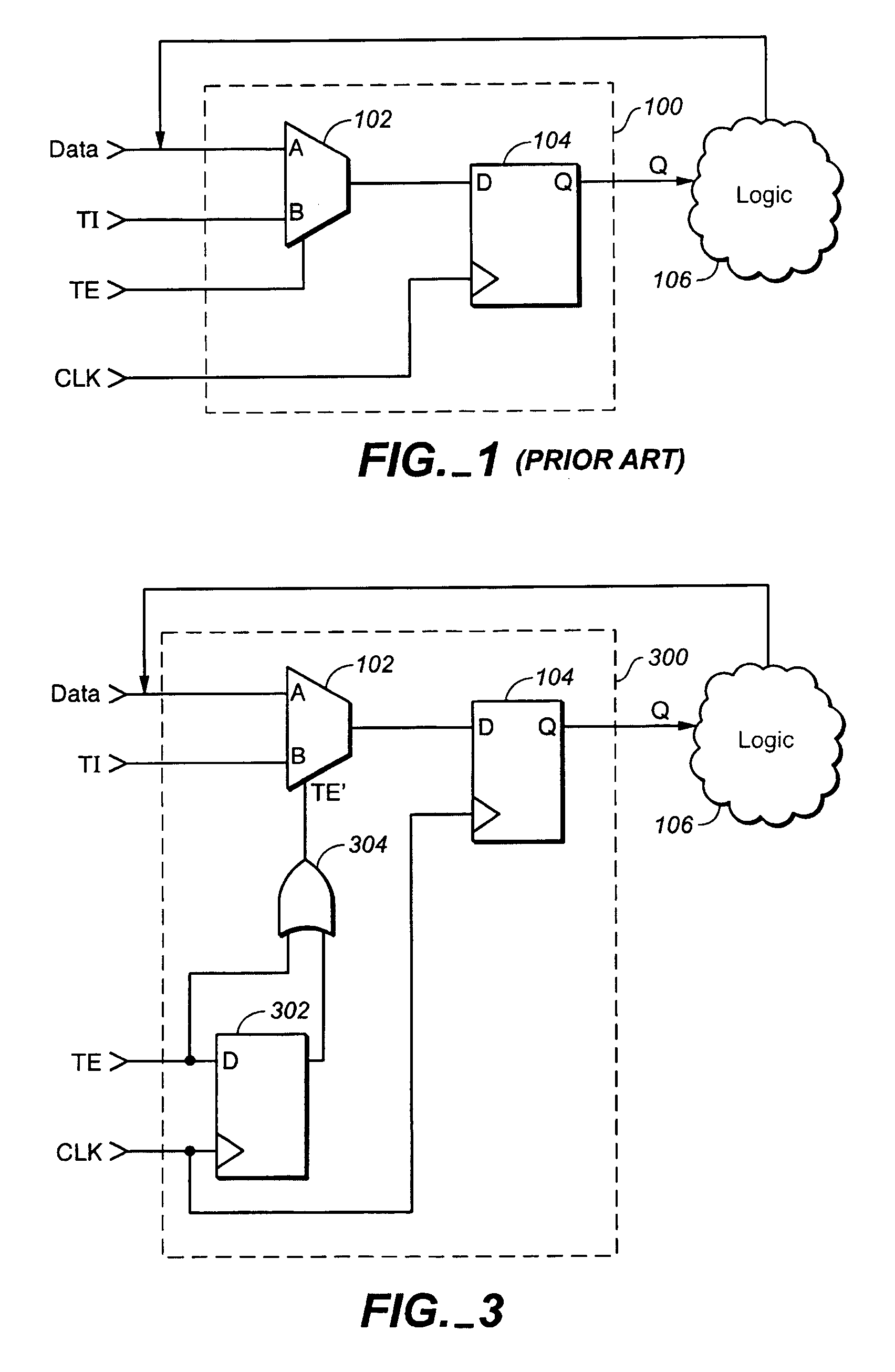Self-timed scan circuit for ASIC fault testing
a self-timed scan and fault technology, applied in the direction of pulse technique, instruments, computation using denominational number representation, etc., can solve the problems of double-sided surface mount techniques, fine-pitch technology packages, and difficulty in device testing, and achieve the effect of reducing the difficulty of testing high-density electronic systems with traditional test methods
- Summary
- Abstract
- Description
- Claims
- Application Information
AI Technical Summary
Benefits of technology
Problems solved by technology
Method used
Image
Examples
Embodiment Construction
[0025]Delay-related effects in random logic are becoming increasingly significant in the overall defect density in semiconductor manufacturing as a result of increased operating frequencies and increased backend metal layers. This trend in delay defect density creates an additional need to test for and reject die having an inadequate speed performance due to delay-related defects. Screening for delay defects has traditionally been done through at-speed functional testing of the die. However, due to an increased ratio of internal nodes to external control and observation points, that is, primary inputs and outputs of the die, it becomes increasingly difficult to create functional test patterns in a time and cost efficient manner. A commonly used method for increasing the test capability of complex integrated circuit designs uses scan chains.
[0026]Scan testing is an effective alternative to functional testing for delay-related defects. One form of scan testing is commonly known as the...
PUM
 Login to View More
Login to View More Abstract
Description
Claims
Application Information
 Login to View More
Login to View More - R&D
- Intellectual Property
- Life Sciences
- Materials
- Tech Scout
- Unparalleled Data Quality
- Higher Quality Content
- 60% Fewer Hallucinations
Browse by: Latest US Patents, China's latest patents, Technical Efficacy Thesaurus, Application Domain, Technology Topic, Popular Technical Reports.
© 2025 PatSnap. All rights reserved.Legal|Privacy policy|Modern Slavery Act Transparency Statement|Sitemap|About US| Contact US: help@patsnap.com



